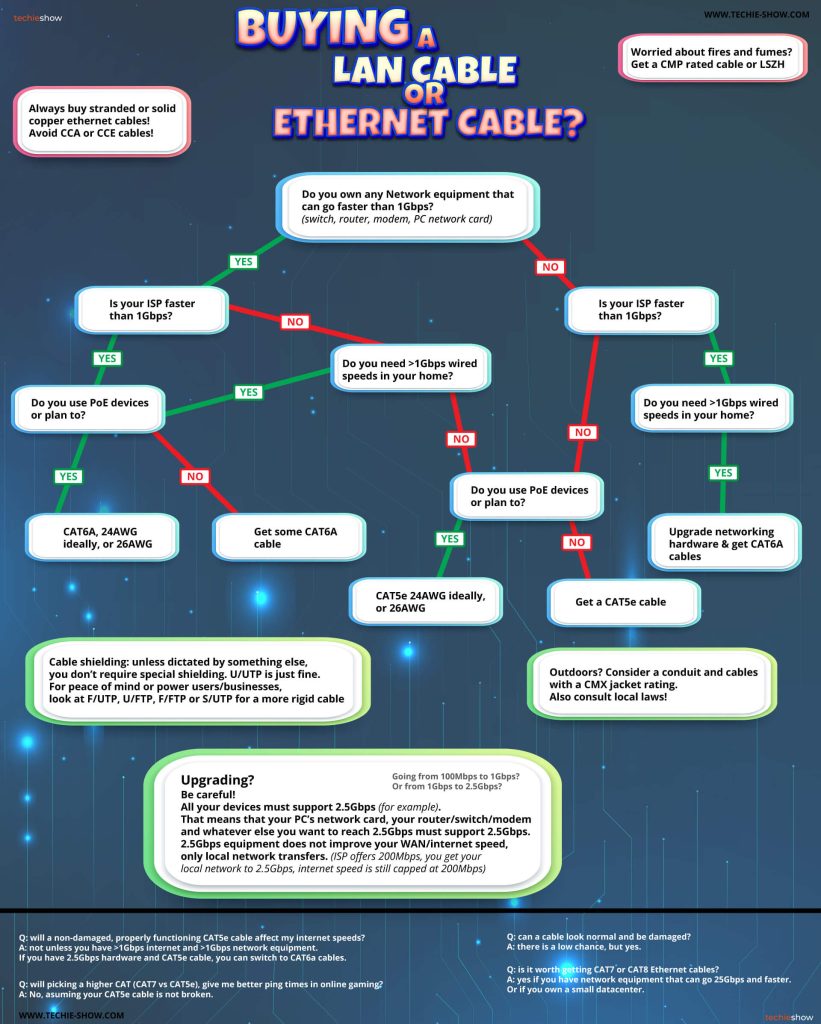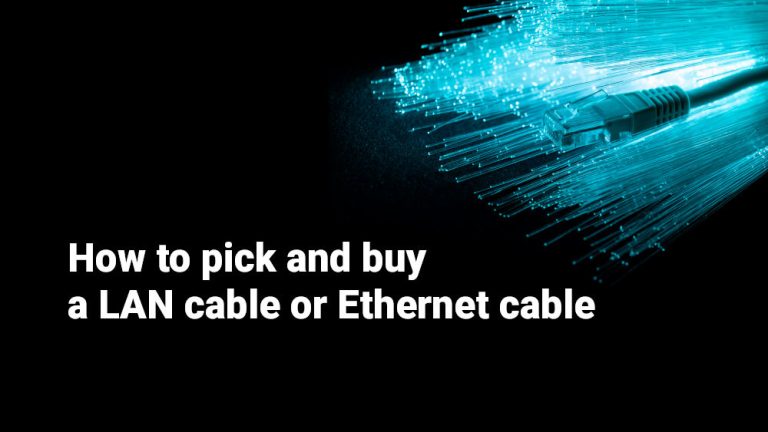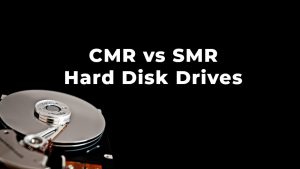A good LAN cable, Ethernet cable, or network cable – however you want to call it, can ensure that your network devices can properly transmit data and that your transfer speeds are as good as they can be.
First of all, I can’t stress this enough: if your hardware and ISP can go up to a maximum of 1Gbps (or lower), a quality Cat 5e cable that is not damaged is more than enough, especially if you stay under 300 feet (about 91 meters). The standards claim 328 feet (100 meters) but I’d stay on the safe side unless you have some good Cat 5e cable that’s preferably 24-gauge.
The only reason to get better than Cat 5e cabling for 1Gpbs networks is futureproofing. In that case, I’d go for Cat 6a so your cables would be 10Gbps-ready.
First step: think about your network
Before setting out to buy the most expensive cable out there just for the sake of it, make sure you won’t get disappointed.
Ask yourself the following:
- What’s the maximum speed of the devices connected to my network?
- What’s the maximum speed of my routers, modems, switches, and other network devices? (like your NAS if you use one)
- What’s the maximum speed advertised by my ISP?
- Will the wires I’m about to buy be put through walls or some inaccessible place?
- Do I need PoE? (Power Over Ethernet)
- Do I want to futureproof or just buy?
What CAT LAN cable to choose?
I’ll put everything on one table, so you can get a better overview of what’s with all these standards and specifications.
| Standard | Maximum Bandwidth | Maximum Distance | Maximum Data Rate | Some ideas |
| CAT 5e | 100 MHz | 100 meters (328 feet) | 1Gbps | Perfect for anyone who does not have >1Gbps equipment. Not great for future-proofing, amazing value as you get 1Gbps dirt cheap. |
| CAT 6 | 250 MHz | 100 meters (328 feet) 55 meters (180 feet) | 10Gbps on up to 55 meters | If 2.5Gbps/5Gbps/10Gbps might be in the plan in the upcoming years, or you already have >1Gbps equipment, great! |
| CAT 6A | 500 MHz | 100 meters (328 feet) | 10Gbps | Ideal for future proofing. The only type of cable I’d use inside walls and permanent/semi-permanent installations. |
| CAT 7 | 600 MHz | 100 meters (328 feet) | 10Gbps | I guess CAT 7 patch cables if your home lab has 10Gbps speeds and you want to burn some $$? |
| CAT 7A | 1000 MHz | 100 meters (328 feet) | 10Gbps | Same as above. |
| CAT 8 | 1600-2000 MHz | 30 meters (98 feet) For 25/40Gbps | 40Gbps | Do you really think you’ll own two devices that can communicate between them at 40Gbps? Didn’t think so. |
So yeah, Cat 5e is quite sufficient for most people. If you really want to invest in good cabling for the sake of it and understand it might make NO difference in speed/performance at the moment, you could go Cat 6a.
If you’re just renovating or building and are wondering what type of cable you should put through a wall, go with Cat 6a Ethernet cable. Even if you’ll soon upgrade to 2.5Gbps or even to 10Gbps, you’ll be fine as Cat 6a can sustain 10Gbps over 100 meters.
LAN cable shielding. What to choose?
You’ve seen terms like these: U/UTP, FTP, S/UTP, SFTP and STP. What do these mean, and should you care?
Fact is, the average home office, gamer, or even small business will rarely need a shielded Ethernet cable. There just aren’t many heavy EMI (electromagnetic interference) in the typical office work scenario.
However, for some cables, I would choose a shielded cable and sometimes even a braided cable. If the cable is prone to being squeezed, hit, or in other ‘dangerous’ scenarios, I’d grab a cable with braided shielding one just to make sure I won’t have issues.
Now, when we’re talking shielding for Ethernet cables, you must know that the actual cable consists of individual twisted pairs of cables. And sometimes nothing is additionally shielded, sometimes just the twisted pairs inside the cable, sometimes just the cable (overall shield that holds all the twisted pairs), and sometimes both!
Here are the types of shieldings with some explanations:
| Common Acronyms | ISO/IEC11801 Name | Cable Shielding Type | Twisted Pair Shielding Type | Example Image |
| UTP | U/UTP | None | None | 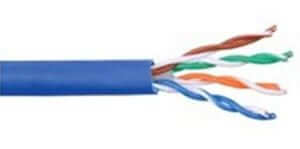 |
| FTP, STP, ScTP | F/UTP | Foil | None | 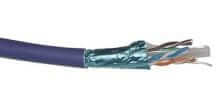 |
| STP, ScTP | S/UTP | Braiding | None | 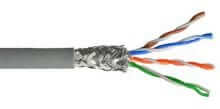 |
| SFPT, S-FTP, STP | SF/UTP | Braiding & Foil | None | 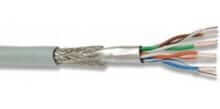 |
| STP, ScTP, PiMF | U/FTP | None | Foil | 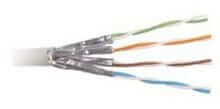 |
| FFTP | F/FTP | Foil | Foil | 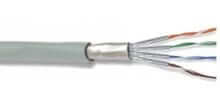 |
| SSTP, SFTP, STP, PiMF | S/FTP | Braiding | Foil | 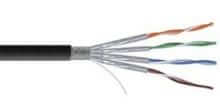 |
| SSTP, SFTP | SF/FTP | Braiding & Foil | Foil | 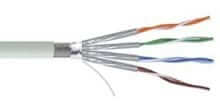 |
Try and find the ISO name of the cable you are looking at, as sometimes things get confusing or downright stupid. There are some wild STP cables out there. But they are actually either F/UTP, S/UTP, SF/UTP, S/FTP or U/FTP… so yeah.
When does it make sense to use what type of shielded cable?
In normal use, just go for whatever you find cheaper. Really, your average user with a random cable coming from his router 30 feet away has no benefit from amazing shielding or anything like that.
Here’s a list of what I would consider useful based on the scenario:
- Home, average users: irrelevant;
- Power users, lots of cables tied together, high power scenarios etc: F/UTP or F/FTP;
- Small/medium business: F/UTP or F/FTP and SF/UTP for risky places;
- Exterior: S/FTP or SF/FTP. I’d still try and use a conduit to be safe;
LAN cable AWG. Does it matter?
Yes, AWG matters. AWG stands for American Wire Gauge, and it measures the thickness of a wire made for electrical purposes.
Don’t get confused! A smaller AWG number means a larger wire diameter. So 20 AWG has a thicker wire than 26 AWG.
AWG is especially important when we take Power-Over-Ethernet into account. PoE devices like some switches, antennas, and cameras get their power from the Ethernet cable.
Higher AWG, therefore thinner wires (smaller conductor), limit the length of the cable you can run without creating resistance and limit the POE usability of the respective cable.
A smaller conductor means that more heat is generated and its easier for heat to build up. Something we don’t want.
Even if there are standards and we have 28 AWG wires that can go up to 60W PoE in certain scenarios and stuff… I’d get some quality cable, especially since you probably don’t need a lot (like 3 spools of 328 feet).
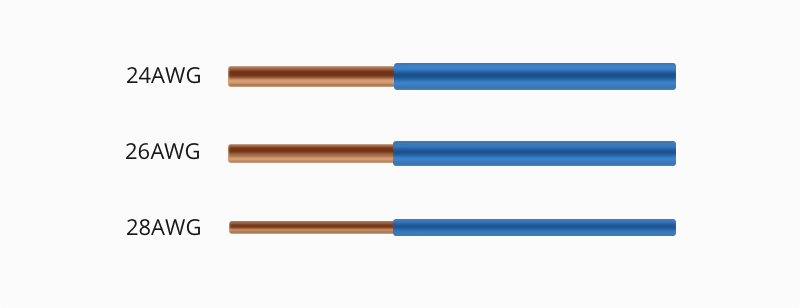
I’d get 24 AWG or at most 26 AWG solid or stranded copper wire cable for any modern PoE usage. (avoid CCA wire!) And if you need Gigabit speeds with future proofing Cat6A. Otherwise, Cat5e will be enough.
What about running Ethernet cable outdoors?
You can. And you can even bury it. For protection I recommend using some conduits. But anyway, if you’re planning to run some Ethernet cable outside, do note that the cable jackets have some ratings.
You want to get a cable with CMX jacket rating. That means it is UV radiation proof but not fire-rated.
What about Plenum Rated Cables (CMP) and LSZH cables?
CMP rated cables can have the advantage of low smoke, low emissions, and low fire spread. So they are pretty safe when compared to the common PVC jacketed cables.
LSZH comes from Low Smoke Zero Halogen and means that cables are build with a jacket material free from halogen. Slightly inferior to the Plenum type and is usually used in Europe.
When in doubt, CMP cables can meet any cable needs.
Apart from regulations and stuff like that, CMP and/or LSZH cables depending on where you live, are nice to have.
Stranded or Solid Copper Wire vs CCA cable
You always want Solid Copper Wire when buying an Ethernet cable.
CCA are not pure copper. CCA comes from Copper Clad Aluminum, or sometimes refered to as CCE for Copper Clad Ethernet.
Even when stripping back the cable jacket to expose the twisted pairs you still cannot tell the difference. Because CCA is an aluminum conducter coated with copper. So it will look like copper.
So be careful and check the specs and jacket so you can avoid CCA/CCE cables.
Important! Only stranded or solid copper conductor cables are approved for Ethernet data cabling. The NEC (National Electric Code) does not recommend CCA Ethernet cable usage in commercial structures. Also, CCA is not approved for use by ANSI/TIA in Ethernet cable applications due to poor data/PoE transmission characteristics. And this is true for a lot of countries, as far as I know, not just the US.
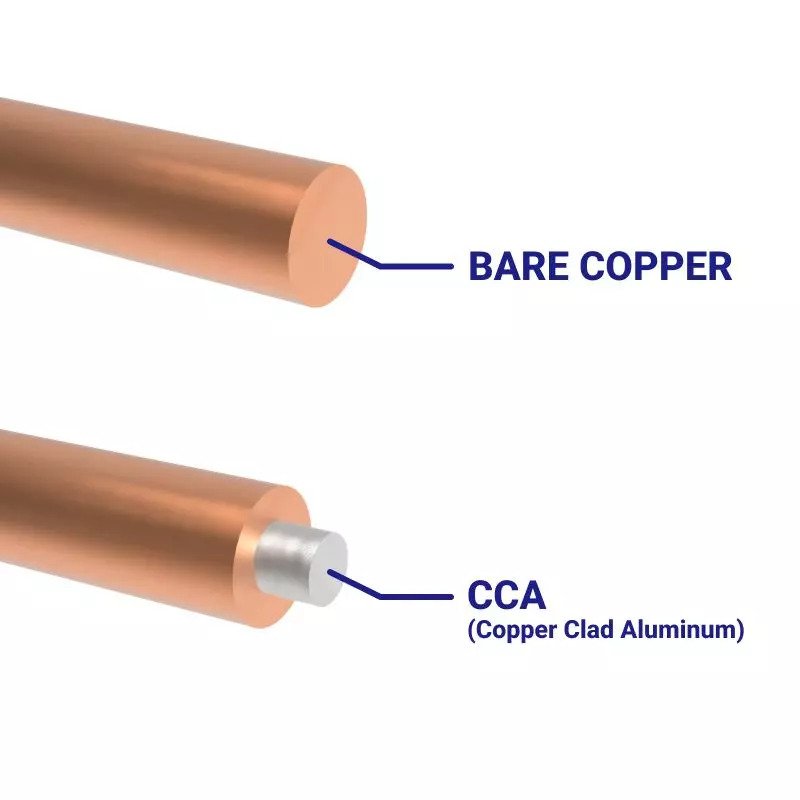
CCA cables are less reliable and easier to break. How come they still exist? Because the average user just buys whatever he thinks sounds good, and luckily, for most applications, they do the job. That does not mean it’s a good option.
Some common questions and answers about LAN cables
No. These differences are not noticeable and even non-existent in most cases.
Unless your old cable was damaged and your network equipment/ISP speed is already maxed out, NO.
A 1Gpbs internet connection or 1Gbps capable switch/router/modem will be able to reach maximum speed with a quality copper CAT 5e cable. Beyond that, you are wasting money.
Any proper, not damaged CAT 5e or better cable.
While recommended and encouraged in certain scenarios, lack of grounding will not affect the functioning of the cable. It will work as fast as your equipment/ISP allows.
Technically, the connector type should be referred to as 8P8C and the wiring pattern is RJ45. But in reality, the term RJ45 for Ethernet cables is used almost universally.
All CAT5, CAT5e, CAT6, CAT6a, CAT7, CAT7a and CAT8 use RJ45 connectors, they are interchangeable.
Not unless your equipment supports at least 25 Gbps. It is a waste of money for consumer-grade equipment which can go as fast as 1Gbps or 2.5Gbps at most.
In general? CAT8.
Will you notice the speed? No.
Your LAN speed is dependent on your network equipment.
Your internet speed and latency/ping is dependent on your ISP. The cable is just a part of the whole network.
In 99% of scenarios, no. And even when we have a lot of cables tied together, you are usually fine with minimal shielding like F/UTP.
The end
This guide is aimed at normal consumers, power users, gamers, and small to medium businesses for normal scenarios. I won’t go into details about various factories handling complex machinery or strange niche situations where a certain type of shielding is mandatory.
If you’re burying cables, planning business cabling, and going through walls… do check your local regulations. Things may vary from state to state and by country, and I am not an official representative to tell you what’s mandatory or what’s the code in your area.
But this article should clear up most of the questions that you might ask yourself when shopping for a LAN cable.
And here’s the infographic:
